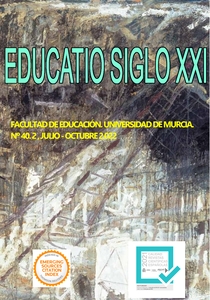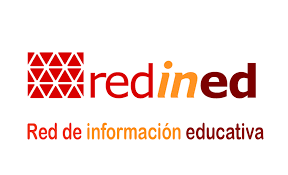Architecture students’ Learning styles: an exploratory study for building a virtual environment
Abstract
This study explores students’ learning styles for the design of didactic strategies and instructional materials. Following a quantitative and exploratory approach, we used an intentional sample of 110 students from Projects III of the architecture degree, semester 2019-3. Felder Soloman’s Learning Styles Index was applied and Cronbach's alpha reliability was 0,82 (very high correlation). The results showed students' learning styles: 1) Type of information to be perceived, Sensory (63%), Intuitive (37%); 2) Sensory channel to capture the information, Visual (97%) Verbal (3%); 3) information process preference, Active (71%) Reflective (29%); and 4) progress toward understanding of contents Sequential (66%) Global (34%). Based on the findings obtained, the construction of the virtual classroom reflected Sensitive/Intuitive, Visual, Active, and Sequential/Global styles, and encouraged Verbal and Reflective styles, through: task-focused teaching, problem-based learning methodology, and abstraction. The instructional means were constituted by: multimedia animation, WebQuest-based Learning Objects, and instructional resources. Classroom adequacy, instructional design, methodology and means in correspondence with preferences for studying and learning, enable students to achieve educational goals; hence the importance of exploring learning styles as a pre-planning stage before the design and implementation of a virtual classroom aimed at training in project skills.
Downloads
References
Alducin, J. y Vázquez, A. (2016). Autoevaluación de conocimientos previos y rendimiento según estilos de aprendizaje en un grado universitario de Edificación. Formación Universitaria, 9(2), 29-40. http://dx.doi.org/10.4067/S0718-50062016000200004
Alonso, C., Gallego, D. y Honey, P. (2012). Los estilos de aprendizaje. Procedimiento de diagnóstico y mejora (8va ed.). Ediciones Mensajero.
Arenas, E. (2017). Estrategias de estilos de aprendizaje de estudiantes: proceso de validación. Alteridad, 12(2), 224-237. https://doi.org/10.17163/alt.v12n2.2017.08
Arentsen, E. (2009). Los estilos de aprendizaje desde el taller de arquitectura: evaluación y propuesta. AUS. Arquitectura/Urbanismo/Sustentabilidad, (5), 10-15. https://doi.org/10.4206/aus.2009.n5-03
Argibay, J. (2009) Muestra en investigación cuantitativa. Subjetividad y Procesos Cognitivos, 13(1), 13-29. https://www.redalyc.org/pdf/3396/339630252001.pdf
Ayalp, G. y Özdemir, N. (2016). Relationship between test anxiety and learning styles of architecture undergraduates. Creative Education, 7, 364-375. http://dx.doi.org/10.4236/ce.2016.72036
Barrera, M. (2015). Abstracción y desarrollo de la inteligencia (2da ed.). Ediciones Quirón S. A.
Bringgs-Myers, I. (1994). An Introduction to Type – MBTI (5ta ed.). Oxford Psychologists Press.
Carmel, C. (2012). Uncovering pathways of design thinking and learning: inquiry on intellectual development and learning style preferences. Journal of Interior Design, 37(2), 47-66. https://doi.org/10.1111/j.1939-1668.2012.01077.x
Cross, N. (2004). Expertise in design: an overview. Design Studies, 25(5), 427-441. https://doi.org/10.1016/j.destud.2004.06.002
Díaz, F., y Hernández, G. (1999). Estrategias docentes para un aprendizaje significativo. McGraw Hill.
Demirbas, O. y Demirkan, H. (2003). Focus on architectural design process through learning styles. Design Studies, 24(5), 437-456. https://doi.org/10.1016/S0142-694X(03)00013-9
Demirkan, H. (2016). An inquiry into the learning-style and knowledge-building preferences of interior architecture students. Design Studies, 24, 28-51. https://doi.org/10.1016/j.destud.2015.12.009
Demirkan, H. y Demirbas, O. (2008). Focus on the learning styles of freshman design students. Design Studies, 29(3), 254-266. https://doi.org/10.1016/j.destud.2008.01.002
Dunn, R. y Dunn, K. (1999). The complete guide to the learning styles inservice system. Allyn & Bacon.
Felder, R. y Soloman, B. (1997, mayo 15). Index of Learning Styles (ILS®) Questionnaire. NC State University. https://www.webtools.ncsu.edu/learningstyles/
Felder, R. y Silverman, L. (1988). Learning and teaching styles and engineering education. Engineering education, 78(7), 674-681.
Felder, R. y Spurlin, J. (2005). Applications, reliability and validity of the Index of Learning Styles. International Journal Engineering Education, 21(1), 103-112. https://www.ijee.ie/articles/Vol21-1/IJEE1553.pdf
Feldman, J. y Monteserin, A. (2015). Automatic detection of learning styles: state of the art. Artificial Intelligence Review, 44, 157–186. https://link.springer.com/article/10.1007/s10462-014-9422-6
Fleischmann, K. (2020). Online design education: Searching for a middle ground. Arts and Humanities in Higher Education, 19(1), 36-57. https://doi.org/10.1177/1474022218758231
Fulani, O., Alagne, O., Aderonmu, P., Jegede, F. y Adewale, B. (2016). Gender, learning styles and performance of 1st year architecture students: first stage of a longitudinal study. International Conference on Education and New Learning Technologies, Barcelona, 5730-5736. Doi: 10.21125/edulearn.2016.2371
Garfias, O. (2006). Metodología para la enseñanza del espacio arquitectónico. Pharos, 13(1), 77-131. https://www.redalyc.org/articulo.oa?id=20813109
González, M., Becerra, J. y Olmos, J. (2018). Promoción de la autogestión a través de objetos de aprendizaje adaptativos en alumnos de educación superior. Edutec. Revista Electrónica De Tecnología Educativa, (63), 15-28 (379). https://doi.org/10.21556/edutec.2018.63.1037
Honey, P. y Mumford, A. (1995). Using your learning styles (3ra ed.). Peter Honey.
Jiménez, M. y Cabero, J. (2021). Los conocimientos tecnológicos, pedagógicos y de contenidos del profesorado universitario andaluz sobre las TIC. Análisis desde el modelo TPACK. Innoeduca, 7(1), 2444-2925. https://doi.org/10.24310/innoeduca.2021.v7i1.11940
Kolb, D. (2015). Experiential learning as the source of learning and development (2da ed.). Prentice-Hall.
Kolb, D. (1976). Learning styles inventory. McBer & Co.
Kouis, D., Kyprianos, K., Ermidou, P., Kaimakis, P. y Koulouris, A. (2020). A framework for assessing LMSs e-courses content type compatibility with learning styles dimensions. Journal of e-learning and knowledge society, 16(2), 73-86. http://www.je-lks.org/ojs/index.php/Je-LKS_EN/article/view/1135204
Labid, W., Pasina, I., Abdelhadi, A., Bayram, G. y Nurunnabi, M. (2019). Learning style preferences of architecture and interior design students in Saudi Arabia: A survey. MethodsX, 6, 961–967. https://doi.org/10.1016/j.mex.2019.04.021
Li, T., Chei, Ch. y Yueh, L. (2018). Emotional Design in Multimedia Learning: Effects of Multidimensional Concept Maps and Animation on Affect and Learning. Science and Technology Education. 14(12), 2-17. https://doi.org/10.29333/ejmste/94229
Litzinger, T., Lee, S., Wise, J. y Felder, R. (2007). A psychometric study of the index. Journal of Engineering Education, 96(4), 13453-13468. https://doi.org/10.1002/j.2168-9830.2007.tb00941.x
Másdeu, M. (2017). La transformación del taller de arquitectura en nuevos espacios de aprendizaje. Un estudio sobre el proceso de integración entre la enseñanza y la práctica profesional [Tesis doctoral, Universidad de Girona]. Repositorio DUGiDocs. http://hdl.handle.net/10256/15411
Merril, M. (2012). First Principles of Instruction: Identifying and Designing Effective, Efficient, and Engaging Instruction. Pfeiffer (John Wiley & Sons).
Mirmoradi, S. (2018). The study of architecture students' learning styles and their relationships. International journal of architectural engineering & urban planning, 28(2), 135-147. http://ijaup.iust.ac.ir/article-1-416-en.html
Molina-Zambrano, M. y Ruiz-Morales, Y. A. (2020). Diseño de Objeto de Aprendizaje basado en una WebQuest para la programación de áreas que definen el espacio arquitectónico. Edutec. Revista Electrónica De Tecnología Educativa, (74), 127-148. https://doi.org/10.21556/edutec.2020.74.1623
Mostafa, M. y Mostafa, H. (2010). How do architects think? learning styles and architectural education. International Journal of Architectural Research, 4(2-3), 310-317. https://archnet.org/publications/5343
Ocampo, F., Guzmán, A., Camarena, P. y De Luna; R. (2014). Identificación de estilos de aprendizaje en estudiantes de ingeniería. Revista Mexicana de Investigación Educativa, 19(61), 401-429. http://www.redalyc.org/articulo.oa?id=14030110004
Opoko, P., Adeokun, C. y Dare, O. (2015). Innovations in the teaching of architectural studio: The covenant experience. Global Journal on Humanites & Social Sciences, Croacia, 1, 73-79. http://eprints.covenantuniversity.edu.ng/id/eprint/3642
Pantoja, M., Duque, L. y Correa, J. (2013). Modelos de estilos de aprendizaje: una actualización para su revisión y análisis. Revista colombiana de Educación, (64), 79-105. https://doi.org/10.17227/01203916.64rce79.105
Rocha, D. y Báez, J. (2011). Los estilos y estrategias de aprendizaje en estudiantes de arquitectura de una universidad privada. Módulo arquitectura CUC, 10(1), 187-203. https://revistascientificas.cuc.edu.co/moduloarquitecturacuc/article/view/135
Ruiz-Bolívar, C. (1992). Instrumentos y técnicas de investigación educativa: un enfoque cuantitativo y cualitativo para la recolección y análisis de datos. Danaga.
Ruiz-Morales, Y. A., Biencinto-López, Ch. García-García, M. y Carpintero, E. (2017). Evaluación de competencias genéricas en el ámbito universitario a través de entornos virtuales: Una revisión narrativa. RELIEVE, 23(1). http://doi.org/10.7203/relieve.23.1.7183
Ruiz-Morales. Y. A. (2018). La WebQuest como estrategia didáctica para el desarrollo de las bases teóricas en un trabajo de aplicación profesional. Revista Científica UNET, 30(2), 536-546.
Ruiz-Morales, Y. A. (2019). Evaluación formativa y compartida para el desarrollo de competencias investigativas en estudiantes universitarios. EDUCERE, 23(75), 499-508. http://www.saber.ula.ve/handle/123456789/45983
Schmeck, R., Ribich, F. y Ramanaiah, N. (1977). Development of a self-report inventory for assessing individual differences in learning processes. Applied Psychological Measurement, 1(3), 413–431. https://doi.org/10.1177/014662167700100310
Schön, A. (1987). Educating the reflective practitioner: Toward a new design for teaching and learning in the professions. Jossey-Bass.
Urbina, A. (2019). Estrategia tecnológica para mejorar el rendimiento académico universitario. Píxel-Bit. Revista de Medios y Educación, (56), 71-93. https://doi.org/10.12795/pixelbit.2019.i56.04
Ventura, A. (2011). Estilos de aprendizaje y prácticas de enseñanza en la universidad: Un binomio que sustenta la calidad educativa. Perfiles educativos, 33(spe), 142-154. http://www.scielo.org.mx/scielo.php?script=sci_arttext&pid=S0185-26982011000500013
Webster, H. (2004). Facilitating critically reflective learning: excavating the role of the design tutor in architectural education. Art, Design & Communication in Higher Education, 2(3), 101-111. https://doi.org/10.1386/adch.2.3.101/0
Copyright (c) 2022 Servicio de Publicaciones de la Universidad de Murcia

This work is licensed under a Creative Commons Attribution-NonCommercial-NoDerivatives 4.0 International License.
Original work publishes in this journal is subject to the following terms:
1. Murcia University Press (the publishing house) holds the copyright of the publishes work, and favours and allows their reutilization under the use license stated in point 2.
© Servicio de Publicaciones, Universidad de Murcia, 2015
2. Work is published in the electronic edition under a license (Creative Commons Reconocimiento-NoComercial-SinObraDerivada 4.0 España (legal text). They can be copied, used, disseminated, transmitted and publicly presented, as long as: i) authorship and original publication source is acknowledged (journal, publishing house and URL of the work); ii) are not used for commercial purposes; iii) the existence and specifications of this use license is stated.
3. Conditions for self-archive. Authors are allowed and encouraged to disseminate electronically the pre-pint (before review) and/or post-print (accepted for publication) versions of their work before their publication since that favours earlier circulation and dissemination resulting in an increased chance for the authors to be cited and for the work to reach a bigger share of the academic community. Colour: RoMEO: green.








